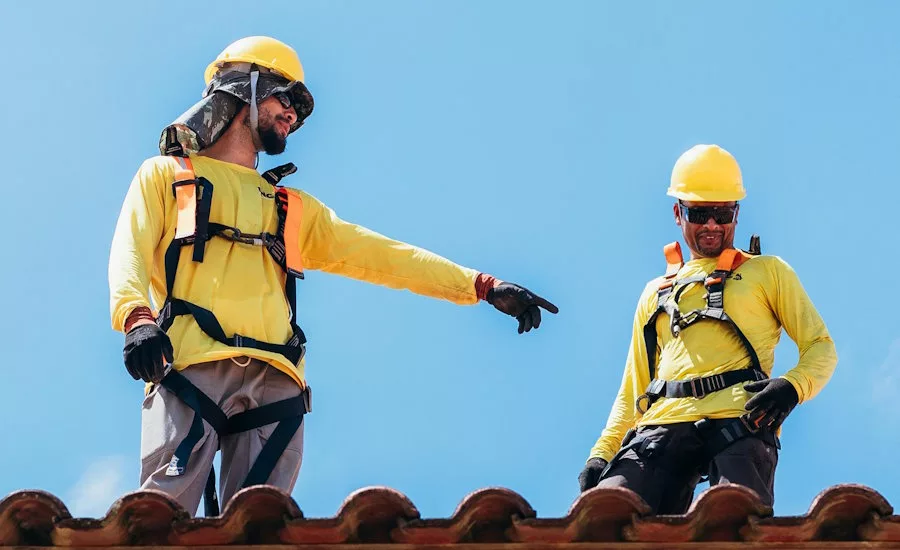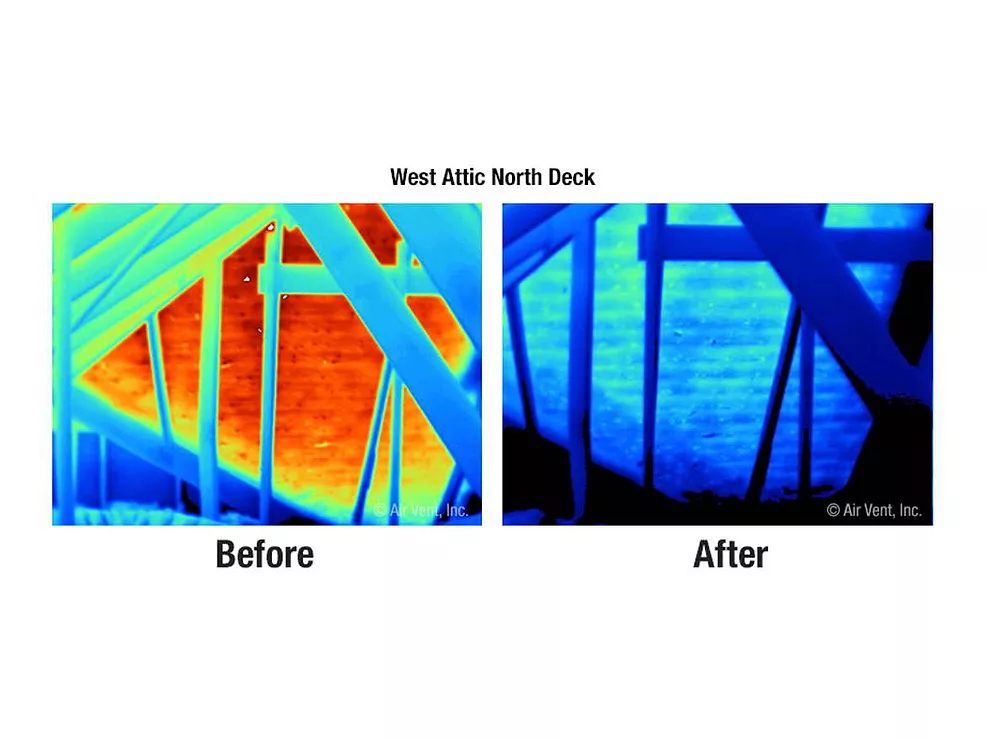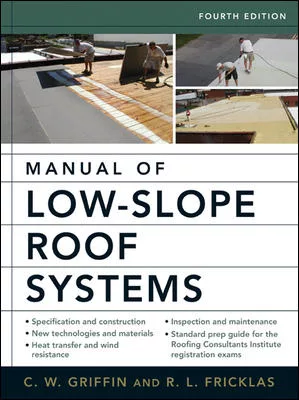Technical Details: Proper Application of Self-Adhered Membranes
Proper application methods are critical to the
long-term performance capabilities of self-adhered membranes. The success of
the membrane is based in large part on the preparation of the substrate.

Proper application methods are critical to the long-term performance capabilities of self-adhered membranes. The success of the membrane is based in large part on the preparation of the substrate. The substrate must be clean of all debris and contaminants and free of any moisture. If the membrane is applied over a wet surface or any points where moisture exists, the membrane will not fully bond. Spots of disbondment can transfer throughout adjacent areas and large-scale delamination can occur. Moisture, including dew, should be evaporated by torch or other drying mechanisms prior to application. Do not apply these sheets when precipitation is present.
Cleanliness of the substrate is of critical importance. Dust, dirt or any other foreign matter that has collected on the substrate must be removed prior to application. Dirt particles - even minute dirt particles - can have an adverse effect on the self-adhered membrane sheets. The particles impede full adhesion and can similarly lead to chronic adhesive and cohesive failures at these points. Proper preparation procedures are crucial to the success of the membrane. These constraints may limit the membrane’s application during periods of high winds, particularly on remedial roof projects where dirt and debris from tear-offs is present.
 There
are also temperature restrictions with these membranes. The material should be
applied when the ambient temperature is above 50 degrees Fahrenheit (10°C).
This obviously restricts application in many parts of the country throughout
the year. Temperature restrictions are applied because the membrane does not
perform in cold temperatures. The self-stick blend becomes increasingly stiff
and significantly reduces the points of contact. The result is the membrane
does not readily adhere to the substrate and subsequent attempts to roll and
re-roll the membrane into place only traps air between the membrane and the
substrate.
There
are also temperature restrictions with these membranes. The material should be
applied when the ambient temperature is above 50 degrees Fahrenheit (10°C).
This obviously restricts application in many parts of the country throughout
the year. Temperature restrictions are applied because the membrane does not
perform in cold temperatures. The self-stick blend becomes increasingly stiff
and significantly reduces the points of contact. The result is the membrane
does not readily adhere to the substrate and subsequent attempts to roll and
re-roll the membrane into place only traps air between the membrane and the
substrate.
Method of Application
Following are general application methods for self-adhered membranes. For the best results, the contractor should apply the membrane in temperature conditions approved by the manufacturer and closely follow the manufacturer’s application requirements.
1. Apply a manufactured approved primer over the substrate in accordance with the manufacturer’s recommended procedures. Allow the primer to adequately dry prior to membrane application.
2. Unroll the self-adhered membrane and allow it to relax in accordance with the manufacturer’s requirements. Relaxation time generally ranges from 30 minutes to two hours depending on the specific work conditions.
3. Set the roll in place to align with the 3-inch lap line.
4. Fold the roll in preparation for application. Some manufacturers require the second half of the roll to be placed over the first half.
5. Cut the release paper at the fold. Make certain that the membrane and/or adhesive are not cut in this process.
6. Begin rolling the release paper from the roll at the roofline while setting the membrane in place.
7. The removed release paper can be set on the used roll core.
8. Immediately following the self-adhered membrane application, roll the membrane with a 70-pound linoleum roller to prevent entrapment of air in the membrane. Roll in the width direction and with the laps so laps are not bucked.
9. Position the next roll of self-adhering membrane adjacent to the applied membrane with a 3-inch side lap.
10. The end laps shall be a minimum of 3 inches.
Seam Application
An issue that has garnered industry attention with self-adhered membranes is seam attachment. Proper application is required at these critical junctures. Openings at seams allow for moisture infiltration into the system, which can dramatically decrease the longevity of the system.
Some manufacturers require hot air welding or torching of the seams for complete adhesion. If these methods are required they should be completed in accordance with the manufacturers requirements and they should be completed on a daily basis at all applied membrane areas.
Following is a general application method:
1. Clean the laps of all adhesion, dirt and contaminants.
2. All seams shall have a 3-inch width. Check with the manufacturer to determine how much of the laps shall be heat applied. Some manufacturers require a 11/2-inch dry lap with the remaining 11/2 inch heat applied.
3. Complete the heat application in accordance with proper application and safety requirements. After the heat application, press the seams together using a handheld roller.
4. Allow the seams to fully bond and proper area for openings or voids. Immediately repair openings or voids as required.

Proper application methods are critical to the long-term performance capabilities of self-adhered membranes. The success of the membrane is based in large part on the preparation of the substrate. The substrate must be clean of all debris and contaminants and free of any moisture. If the membrane is applied over a wet surface or any points where moisture exists, the membrane will not fully bond. Spots of disbondment can transfer throughout adjacent areas and large-scale delamination can occur. Moisture, including dew, should be evaporated by torch or other drying mechanisms prior to application. Do not apply these sheets when precipitation is present.
Cleanliness of the substrate is of critical importance. Dust, dirt or any other foreign matter that has collected on the substrate must be removed prior to application. Dirt particles - even minute dirt particles - can have an adverse effect on the self-adhered membrane sheets. The particles impede full adhesion and can similarly lead to chronic adhesive and cohesive failures at these points. Proper preparation procedures are crucial to the success of the membrane. These constraints may limit the membrane’s application during periods of high winds, particularly on remedial roof projects where dirt and debris from tear-offs is present.

The
two-ply Firestone Self-Adhered Base System combines Firestone MB Base SA with
either an APP or SBS cap sheet torch-applied directly over the base sheet.
(Photo courtesy of Firestone Building Products.)
Method of Application
Following are general application methods for self-adhered membranes. For the best results, the contractor should apply the membrane in temperature conditions approved by the manufacturer and closely follow the manufacturer’s application requirements.
1. Apply a manufactured approved primer over the substrate in accordance with the manufacturer’s recommended procedures. Allow the primer to adequately dry prior to membrane application.
2. Unroll the self-adhered membrane and allow it to relax in accordance with the manufacturer’s requirements. Relaxation time generally ranges from 30 minutes to two hours depending on the specific work conditions.
3. Set the roll in place to align with the 3-inch lap line.
4. Fold the roll in preparation for application. Some manufacturers require the second half of the roll to be placed over the first half.
5. Cut the release paper at the fold. Make certain that the membrane and/or adhesive are not cut in this process.
6. Begin rolling the release paper from the roll at the roofline while setting the membrane in place.
7. The removed release paper can be set on the used roll core.
8. Immediately following the self-adhered membrane application, roll the membrane with a 70-pound linoleum roller to prevent entrapment of air in the membrane. Roll in the width direction and with the laps so laps are not bucked.
9. Position the next roll of self-adhering membrane adjacent to the applied membrane with a 3-inch side lap.
10. The end laps shall be a minimum of 3 inches.
Seam Application
An issue that has garnered industry attention with self-adhered membranes is seam attachment. Proper application is required at these critical junctures. Openings at seams allow for moisture infiltration into the system, which can dramatically decrease the longevity of the system.
Some manufacturers require hot air welding or torching of the seams for complete adhesion. If these methods are required they should be completed in accordance with the manufacturers requirements and they should be completed on a daily basis at all applied membrane areas.
Following is a general application method:
1. Clean the laps of all adhesion, dirt and contaminants.
2. All seams shall have a 3-inch width. Check with the manufacturer to determine how much of the laps shall be heat applied. Some manufacturers require a 11/2-inch dry lap with the remaining 11/2 inch heat applied.
3. Complete the heat application in accordance with proper application and safety requirements. After the heat application, press the seams together using a handheld roller.
4. Allow the seams to fully bond and proper area for openings or voids. Immediately repair openings or voids as required.
Looking for a reprint of this article?
From high-res PDFs to custom plaques, order your copy today!



